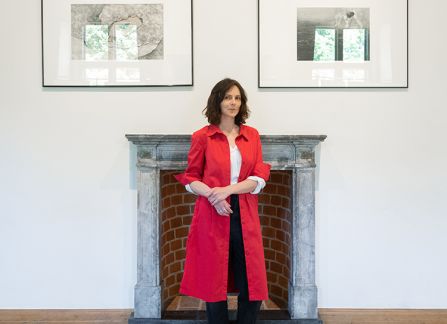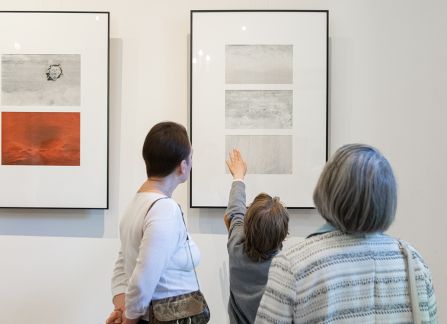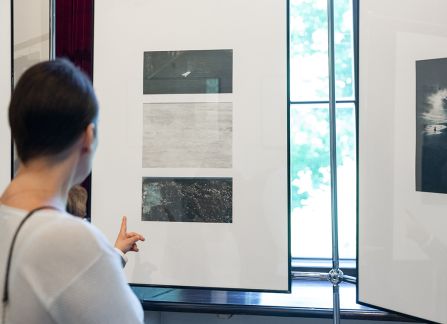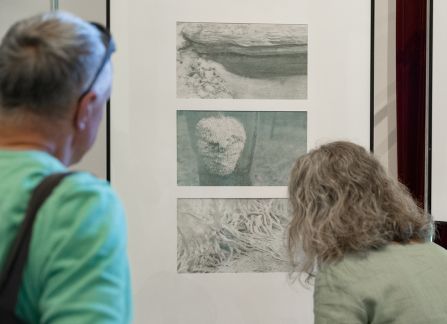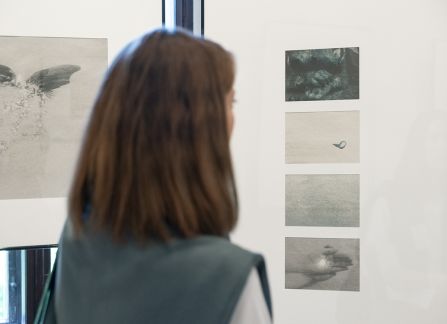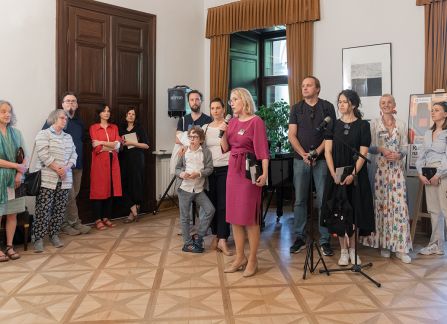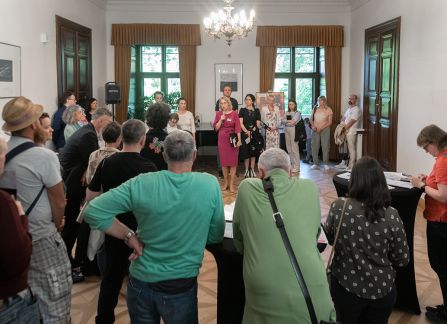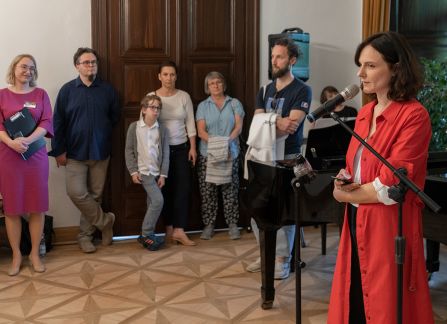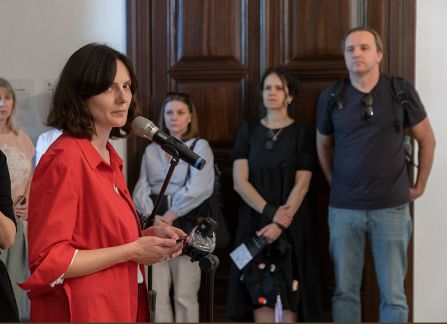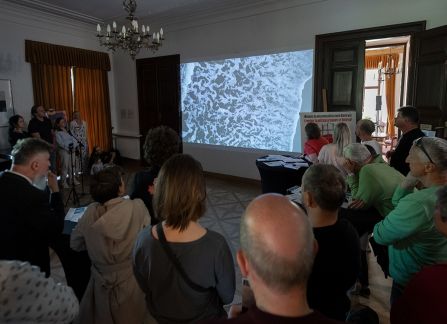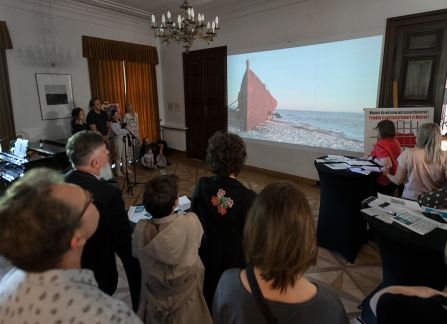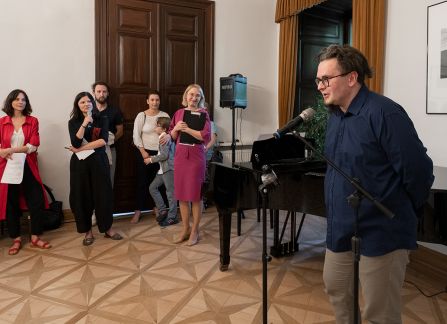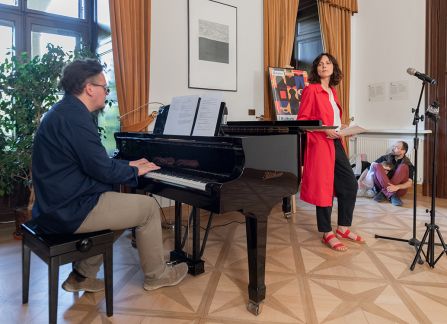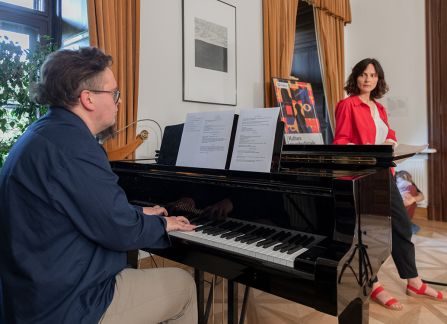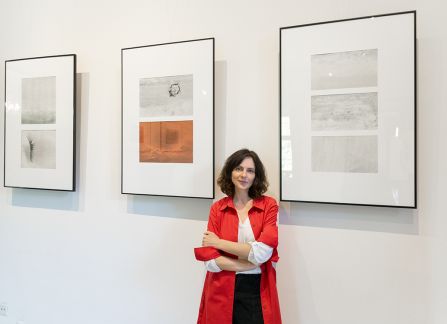BETROTHAL TO THE SEA - 27.05.2023
We invite you to an exhibition of photographs by Maria Elena Bonet.
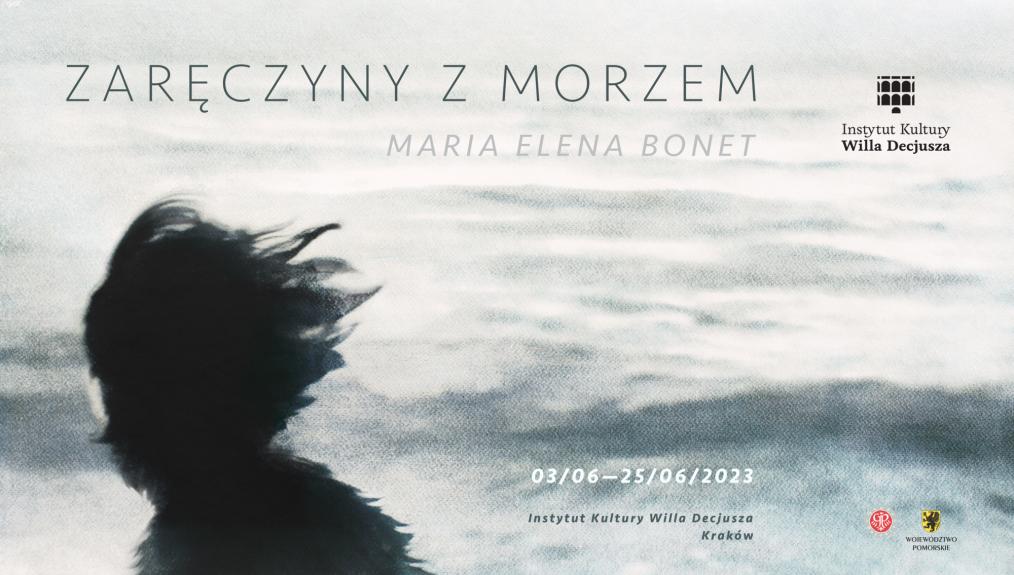
We invite you on 3 June (Saturday) at 16.00 to Villa Decius for the opening of an exhibition of extraordinary photographs by Maria Elena Bonet, as part of the event CULTURE IN EXILE. SOLIDARITY DAYS AT VILLA DECJUSZA.
BETROTHAL TO THE SEA is a visual project by Belarusian artist Maria Elena Bonet, which consists of a short film and photographic works created in the rarely used today gum bichromate technique.
The project BETROTHAL TO THE SEA - as the union of the river with the sea - is a continuation and deepening of the theme of regaining freedom, which the author took up in her earlier realisation entitled My River (presented at the Centre for Contemporary Art Ujazdowski Castle in Warsaw and at the Willa Decius Cultural Institute in Krakow in 2022).
BETROTHAL TO THE SEA is an extremely personal artistic statement, for which the basis is a metaphorical journey into oneself to find one's true 'face'. A key and also most important element of the concept is the creative process affecting one's own self and identity construction, which expresses a personal understanding of discovering freedom. Although the project is autobiographical in nature, at the same time it becomes an image of the pursuit of acquiring freedom through revealing symbolism in nature, philosophy, religion and history. Its main idea develops the notion of freedom as an intrinsic value, as well as the main goal of human aspiration.
My story of seeking freedom began with creativity. Creativity from nothing. From what had been burned into me over the past years. From death. Just as from the river I learned to follow my soul, from the sea I learn to turn pain into clear water. To enter a wound and return a different one. The sea is full of resurrection. It is no coincidence that the Hel Peninsula has become my alchemical laboratory. I associate the place with the ancient goddess Hel, who embraces the dead with her warm hand and the living with her cold one, connecting and caring for the two worlds as one. Helium collects and preserves (or protects) our 'bones', calling us to live according to her essence. Her presence is expressed in the project through transitional states and alchemical phases. Helium teaches rebirth from the ashes. My creative tool in the project, manual photography, has similar qualities. The light-sensitive emulsion created from natural materials contains all the elements, and the stages in the creation of the photograph reflect the cycles of nature and man. Each time during my creative work I go through these phases - birth - death - birth. Such conditions of human movement and development are metaphorically expressed through the properties of the gum bichromate technique. . Acacia gum (acacia resin), from which, according to one legend, the phoenix egg was created, is the main binding ingredient in the technique. Combining it with coal and ash to create the artwork, I turn to sunlight for exposure and to the sea for manifestation. The sea symbolises the force that can transform a person and reveal their own face. Through the process of developing the photographs by hand, which is depicted in the film, I metaphorically interpret the spiritual formation of the human being. - Maria Elena Bonet says of her project.
The exhibition will be on display at Villa Decius until 25 June 2023.
BETROTHAL TO THE SEA is a visual project by Belarusian artist Maria Elena Bonet, which consists of a short film and photographic works created in the rarely used today gum bichromate technique.
The project BETROTHAL TO THE SEA - as the union of the river with the sea - is a continuation and deepening of the theme of regaining freedom, which the author took up in her earlier realisation entitled My River (presented at the Centre for Contemporary Art Ujazdowski Castle in Warsaw and at the Willa Decius Cultural Institute in Krakow in 2022).
BETROTHAL TO THE SEA is an extremely personal artistic statement, for which the basis is a metaphorical journey into oneself to find one's true 'face'. A key and also most important element of the concept is the creative process affecting one's own self and identity construction, which expresses a personal understanding of discovering freedom. Although the project is autobiographical in nature, at the same time it becomes an image of the pursuit of acquiring freedom through revealing symbolism in nature, philosophy, religion and history. Its main idea develops the notion of freedom as an intrinsic value, as well as the main goal of human aspiration.
My story of seeking freedom began with creativity. Creativity from nothing. From what had been burned into me over the past years. From death. Just as from the river I learned to follow my soul, from the sea I learn to turn pain into clear water. To enter a wound and return a different one. The sea is full of resurrection. It is no coincidence that the Hel Peninsula has become my alchemical laboratory. I associate the place with the ancient goddess Hel, who embraces the dead with her warm hand and the living with her cold one, connecting and caring for the two worlds as one. Helium collects and preserves (or protects) our 'bones', calling us to live according to her essence. Her presence is expressed in the project through transitional states and alchemical phases. Helium teaches rebirth from the ashes. My creative tool in the project, manual photography, has similar qualities. The light-sensitive emulsion created from natural materials contains all the elements, and the stages in the creation of the photograph reflect the cycles of nature and man. Each time during my creative work I go through these phases - birth - death - birth. Such conditions of human movement and development are metaphorically expressed through the properties of the gum bichromate technique. . Acacia gum (acacia resin), from which, according to one legend, the phoenix egg was created, is the main binding ingredient in the technique. Combining it with coal and ash to create the artwork, I turn to sunlight for exposure and to the sea for manifestation. The sea symbolises the force that can transform a person and reveal their own face. Through the process of developing the photographs by hand, which is depicted in the film, I metaphorically interpret the spiritual formation of the human being. - Maria Elena Bonet says of her project.
The exhibition will be on display at Villa Decius until 25 June 2023.
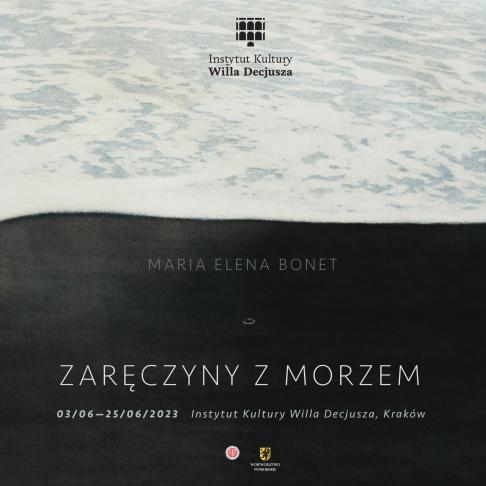
Maria Elena Bonet
Born in Minsk, she graduated from the Belarusian Academy of Fine Arts. Since 2007, she has been focusing on analogue photography, creating works of art using manual photographic processes such as the gelatin-silver technique, gum bichromate process, tin process, cyanotype. Since 2017, she has been conducting original workshops in manual photography. Since 2018, she has been developing multimedia projects including photography, video, sound and light. Since 2019, she has been represented by art galleries in France and Spain.
In 2020, she was nominated for the State Prize for Fine Arts in Belarus: Art Photography. In solidarity with the censored artist and the victims of government violence in Belarus, she withdrew her candidature.
In 2021, she was the winner of the Month of Photography in Grenoble, France. In the same year, the film My River was selected in the short film competition and screened at the ValdarnoCinema Film Festival in Italy. She also received the Gaude Polonia scholarship from the Minister of Culture and National Heritage and came to Poland, where she now lives and works in Gdansk.
In 2022, she was awarded the Cultural Scholarship of the City of Gdansk. She has also started researching the history of analogue photography in Belarus and Poland at the University of Warsaw.
In 2020, she was nominated for the State Prize for Fine Arts in Belarus: Art Photography. In solidarity with the censored artist and the victims of government violence in Belarus, she withdrew her candidature.
In 2021, she was the winner of the Month of Photography in Grenoble, France. In the same year, the film My River was selected in the short film competition and screened at the ValdarnoCinema Film Festival in Italy. She also received the Gaude Polonia scholarship from the Minister of Culture and National Heritage and came to Poland, where she now lives and works in Gdansk.
In 2022, she was awarded the Cultural Scholarship of the City of Gdansk. She has also started researching the history of analogue photography in Belarus and Poland at the University of Warsaw.


